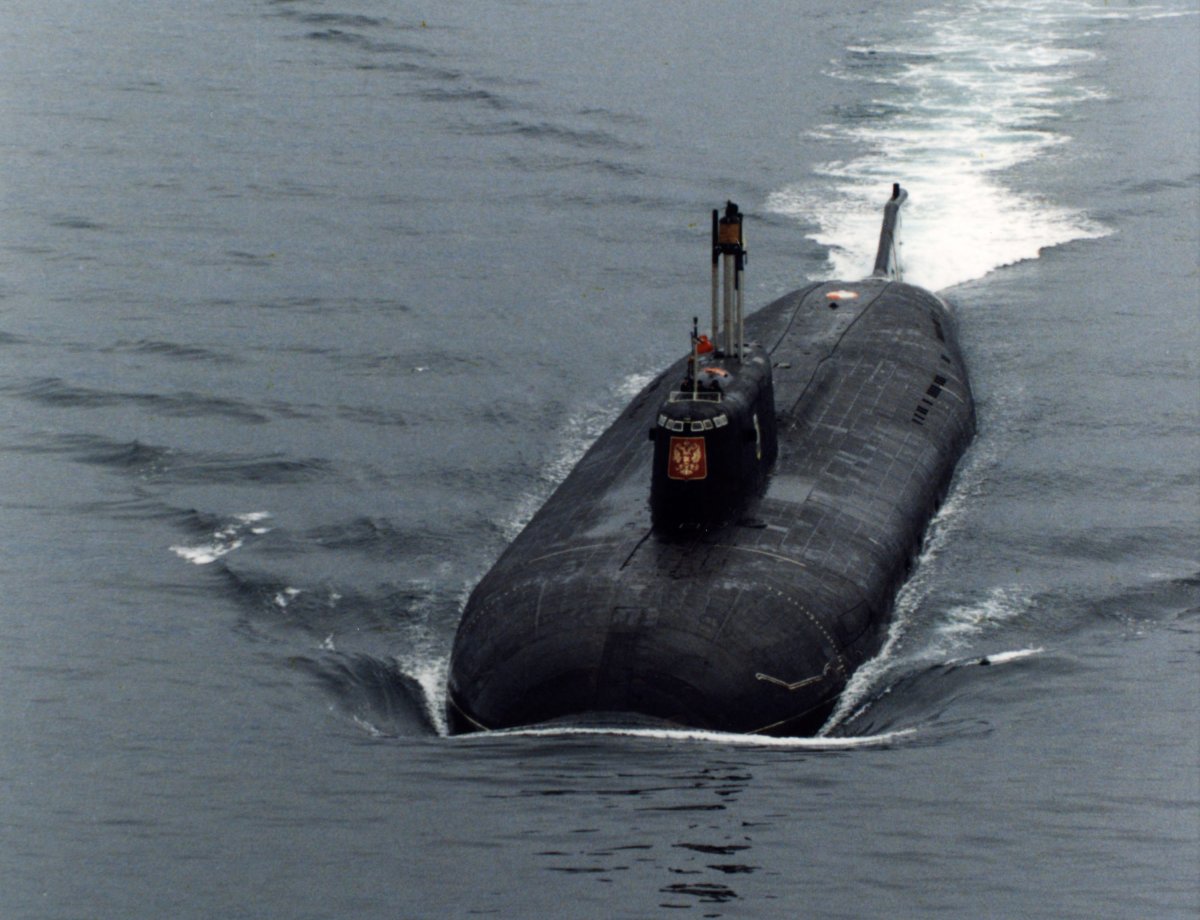As Russian President Vladimir Putin's war in Ukraine continues to rage, United States commanders and military observers are sounding the alarm about the activity of Russia's submarine fleet thousands of miles away, off the U.S. coast.
Throughout the war, which began when Putin launched a full-scale invasion of neighboring Ukraine last February, there has been a buildup of Russian Navy forces in the Black Sea. There has also been an increasing presence of Russian submarines off of U.S. coasts and in the Mediterranean, according to officials.
The Russian Navy commands one of the most diverse submarine fleets in the world. Some are capable of carrying ballistic missiles with nuclear warheads, which Moscow considers key to its strategic deterrent.
The nation has been working to improve its submarine fleet since the collapse of the Soviet Union in 1991. Over the past several years in particular, Moscow produced a series of submarines that have the capability to reach the most critical targets in the U.S. and continental Europe.

In December, Putin said his country would be building more nuclear-powered submarines, "which will ensure Russia's security for decades to come."
There are indications that "nuclear-powered submarines have been deploying off the coast of the United States and into the Mediterranean and elsewhere along Europe periphery," Michael Peterson, director of the Russia Maritime Studies Institute (RMSI), which conducts research on Russian military and economic issues linked to the world's oceans, told Newsweek.
Their deployments "mirror Soviet style submarine deployments in the Cold War," he said.
Last October, U.S. Air Force General Glen VanHerck, the head of U.S. Northern Command and NORAD, warned about the growing presence of the nuclear-powered Severodvinsk-class submarines off of U.S. coasts. He characterized Russia as the primary threat to the country right now.
"They just moved subs, their first [Severodvinsk submarine] into the Pacific," VanHerck told the Association of the U.S. Army Conference. "Another [Severodvinsk] is out in the Mediterranean right now and another that's out on its way into the Atlantic. That will be a persistent, proximate threat capable of carrying a significant number of land-attack cruise missiles that can threaten our homeland."
A month earlier, OSINT and Naval analyst HI Sutton said there has been a build-up of Russian Navy forces in the Mediterranean.
VanHerck in 2021 described the submarines as being "on par with" domestic submarines in terms of quietness.
In February 2020, U.S. Navy Vice Admiral Andrew "Woody" Lewis told the U.S. Naval Institute and the Center for Strategic and International Studies think tank that the increasing presence of Russian submarine activity in the Atlantic Ocean means that his service no longer considers the East Coast as an "uncontested" area or an automatic "safe haven" for its vessels.
"We have seen an ever-increasing number of Russian submarines deployed in the Atlantic, and these submarines are more capable than ever, deploying for longer periods of time, with more lethal weapons systems," Lewis said at the time. "Our sailors have the mindset that they are no longer uncontested and to expect to operate alongside our competitors each and every underway."
The U.S. Navy is also undergoing a modernization drive. It has a total of 64 submarines in its fleet, including 50 nuclear-powered attack submarines, which are tasked with engaging and destroying enemy vessels; supporting on-shore operations and carrier groups; and carrying out surveillance, according to nonprofit Nuclear Threat Initiative.
The U.S. began building its largest and most advanced Columbia-class nuclear-powered ballistic missile submarine (SSBN) in June 2022.
Three of the country's most powerful attack submarines were reportedly deployed by the U.S. Navy in July 2021.
And in October 2022, the U.S. Navy deployed its stealthiest U.S. submarine in the Arabian Sea, the Ohio-class SSBN. Former submariner Tom Shugart, the adjunct senior fellow at the Center for a New American Security, said its deployment could be "to show whomever needs to be reminded that the U.S. is willing and able to send SSBNs to virtually any ocean area it chooses, undetected."
The exact scale of Russia's submarine underwater activity remains unclear, though Peterson said there has been a clear increase over the past 20 years.
Peterson noted, however, that he believes a "weakness" will be in place for the Russian Navy for at least the next three to five years due to Putin's war in Ukraine.
"The [Russian] Navy is running out of munitions, I think that's clear. Their campaign against strategic infrastructure targets has slowed down. They're not shooting as frequently anymore, and I think that's an indication that they are running out of weapons or are in short supply," he told Newsweek.
He added: "So that's going to be a weakness going forward for the next several years until the conflict is over, and the Navy is able to reconstitute."
Do you have a tip on a world news story that Newsweek should be covering? Do you have a question about the Russia-Ukraine war? Let us know via worldnews@newsweek.com
Update 03/07/23 2:43 a.m. ET: This article was updated with additional information.
Uncommon Knowledge
Newsweek is committed to challenging conventional wisdom and finding connections in the search for common ground.
Newsweek is committed to challenging conventional wisdom and finding connections in the search for common ground.
About the writer
Isabel van Brugen is a Newsweek Reporter based in Kuala Lumpur. Her focus is reporting on the Russia-Ukraine war. Isabel ... Read more
To read how Newsweek uses AI as a newsroom tool, Click here.








